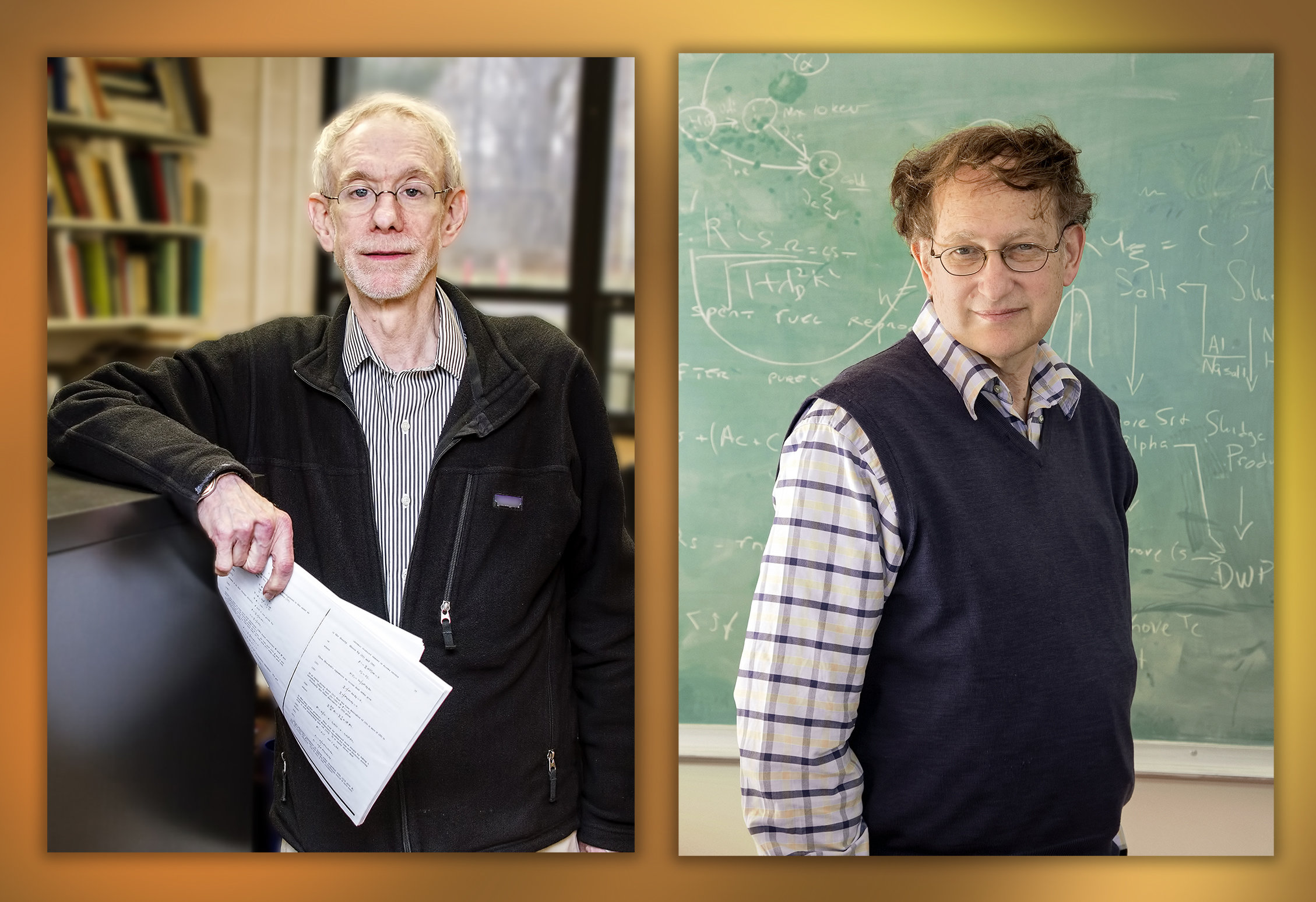博文
科学家发现一种稳定聚变等离子体的过程(附原文)
|||
科学家发现一种稳定聚变等离子体的过程(附原文)
诸平

Physicists Allan Reiman, left, and Nat Fisch. Credit: Elle Starkman/PPPL Office of Communications
据物理学家组织网(phy.org)2019年1月9日报道,来自美国能源部(DOE)普林斯顿等离子体物理实验室(Princeton Plasma Physics Laboratory, PPPL)的消息,该实验室的科研人员已经发现了一种稳定聚变等离子体的过程。
科学家正在寻找能够引起聚变反应的外力,就像太阳和星星为地球提供的能量,必须保持超高温等离子体不受破坏。现在,美国能源部(DOE)普林斯顿等离子体物理实验室(Princeton Plasma Physics Laboratory, PPPL)研究人员发现了一种能够有助于控制中断被认为是最危险的聚变等离子体的方法。
复制融合(Replicating fusion)可以为城市和工业提供实际上是无限的清洁能源,但是,复制融合释放出的能量就是等离子体物质态的原子核聚合过程中释放出的能量,这种能量几乎是无限的。然而,捕捉和控制聚变能是全球科学与工程研究人员面临的一个关键性的挑战。PPPL的发现已经在《物理评论快报》(Physical Review Letters)于2018年11月30日发表——A. H. Reiman, N. J. Fisch. Suppression of Tearing Modes by Radio Frequency Current Condensation. Physical Review Letters, 2018, 121: 225001. DOI: 10.1103/PhysRevLett.121.225001.
2018 Suppression of Tearing Modes by Radio Frequency Current Condensation.pdf
更多信息请注意浏览原文或者相关报道
Scientists discover a process that stabilizes fusion plasmas
January 9, 2019 by John Greenwald, Princeton Plasma Physics Laboratory
Scientists seeking to bring the fusion reaction that powers the sun and stars to Earth must keep the superhot plasma free from disruptions. Now researchers at the U.S. Department of Energy's (DOE) Princeton Plasma Physics Laboratory (PPPL) have discovered a process that can help to control the disruptions thought to be most dangerous.
Replicating fusion, which releases boundless energy by fusing atomic nuclei in the state of matter known as plasma, could produce clean and virtually limitless power for generating electricity for cities and industries everywhere. Capturing and controlling fusion energy is therefore a key scientific and engineering challenge for researchers across the globe.
Creating magnetic islands
The PPPL finding, reported in Physical Review Letters, focuses on so-called tearing modes—instabilities in the plasma that create magnetic islands, a key source of plasma disruptions. These islands, bubble-like structures that form in the plasma, can grow and trigger disruptive events that halt fusion reactions and damage doughnut-shaped facilities called "tokamaks" that house the reactions.
Researchers found in the 1980s that using radio-frequency (RF) waves to drive current in the plasma could stabilize tearing modes and reduce the risk of disruptions. However, the researchers failed to notice that small changes—or perturbations—in the temperature of the plasma could improve the stabilization process, once a key threshold in power is exceeded. The physical mechanism that PPPL has identified works like this:
•The temperature perturbations affect the strength of the current drive and the amount of RF power deposited in the islands.
•The perturbations and their impact on the deposition of power feedback against each other in a complex—or nonlinear—manner.
•When the feedback combines with the sensitivity of the current drive to temperature perturbations, the efficiency of the stabilization process increases.
•Furthermore, the improved stabilization is less to likely to be affected by misaligned current drives that fail to hit the center of the island.
The overall impact of this process creates what is technically called "RF current condensation," or concentration of RF power inside the island that keeps it from growing. "The power deposition is greatly increased," said Allan Reiman, a theoretical physicist at PPPL and lead author of the paper. "When the power deposition in the island exceeds a threshold level, there is a jump in the temperature that greatly strengthens the stabilizing effect. This allows the stabilization of larger islands than previously thought possible."
Beneficial to ITER
This process can be particularly beneficial to ITER, the international tokamak under construction in France to demonstrate the feasibility of fusion power. "There is worry about islands getting large and causing disruptions in ITER," Reiman said. "Taken together, these new effects should make it easier to stabilize ITER plasmas."
Reiman worked with Professor Nat Fisch, associate director for academic affairs at PPPL and coauthor of the report. Fisch had demonstrated in a landmark 1970s paper that RF waves could be used to drive currents to confine tokamak plasmas through a process now called "RF current drive."
Fisch points out how "it was Reiman's groundbreaking paper in 1983 that predicted that these RF currents could also stabilize tearing modes. The use of RF current drive for stabilization of tearing modes was perhaps even more crucial to the tokamak program than using these currents to confine the plasma," Fisch said.
"Hence," he said, "Reiman's 1983 paper essentially launched experimental campaigns on tokamaks worldwide to stabilize tearing modes." Moreover, he added, "Significantly, in addition to predicting the stabilization of tearing modes by RF, the 1983 paper also pointed out the importance of the temperature perturbation in magnetic islands."
Underappreciated feature
The new paper takes a fresh look at the impact of these temperature perturbations on the islands, a feature which has been underappreciated since the 1983 paper pointed to it. "We basically went back 35 years to carry that thought just a bit further by exploring the fascinating physics and larger implications of positive feedback," Fisch said. "It turned out that these implications might now be very important to the tokamak program today."
The theoreticians began their recent work with a simple model and advanced to more complex ones to address the key issues. They now plan to produce a more detailed picture with still-more sophisticated models. They are also working to suggest experimental campaigns that will expose these new effects. Support for this research comes from the DOE Office of Science.
Explore further: Team wins major supercomputer time to study the edge of fusion plasmas
More information: A. H. Reiman et al, Suppression of Tearing Modes by Radio Frequency Current Condensation, Physical Review Letters (2018). DOI: 10.1103/PhysRevLett.121.225001
https://blog.sciencenet.cn/blog-212210-1156213.html
上一篇:高引撤稿论文Top10及撤稿排行榜
下一篇:小年快乐